Indigenous Stories in Stone: Parliament’s supernatural creatures, part four
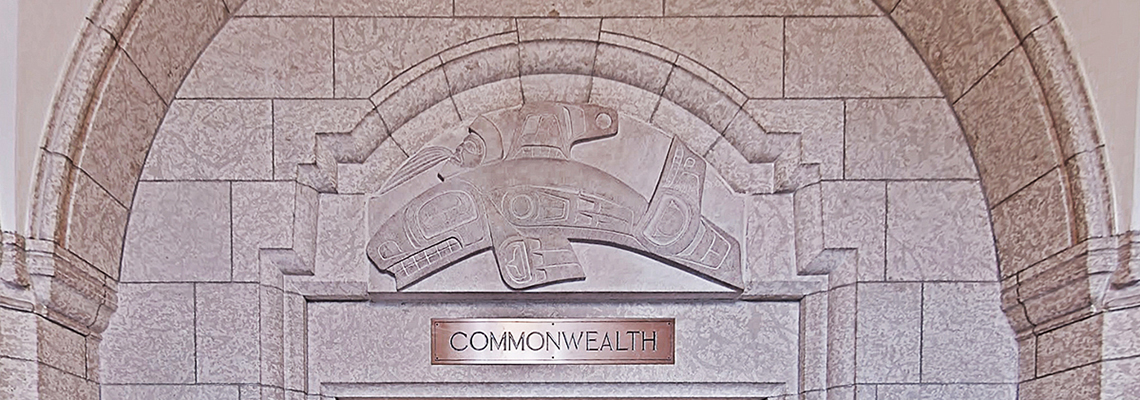
In the last of a series of four articles about supernatural creatures on Parliament Hill, we look at three Indigenous legends carved in Parliament Hill’s Centre Block.
In February 2019, the Senate moved to the Senate of Canada Building, a former train station built in 1912. The Senate will occupy this temporary location while Parliament’s Centre Block — the Senate’s permanent home — is rehabilitated.
Although Centre Block is shuttered for rehabilitation work, Canadians can still experience its art and architecture — as well as the Senate of Canada Building’s — through the Senate’s immersive virtual tours.
For more than 150 years, Parliament has been telling the story of Canada through its carvings, stained-glass windows and paintings. But Indigenous representation was largely overlooked until 1978, when Parliament launched an Indigenous sculpture program.
House of Commons Curator Johanna Mizgala said the program brought fresh cultural perspectives.
“That’s what Parliament’s supposed to be,” she said. “A confluence of voices and ideas from different regions and of different origins.”
Showcasing works by Indigenous artists made for a richer, more inclusive representation of the country while it exposed many Parliament Hill visitors to different art traditions for the first time.
Here are the stories behind three works by Indigenous artists in Centre Block.
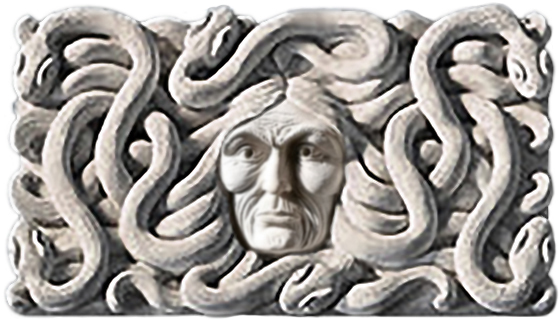
Tadodaho
Tadodaho, the snake-haired warlord of Haudenosaunee legend, looms over The Creation, a monumental limestone panel in Centre Block’s House of Commons foyer. Its sculptor, Cayuga artist Joe Jacobs (1934-2015), taught himself carving after an industrial accident at age 40. He received the Order of Canada in 1985.
The Creation is a pictorial encyclopedia of Haudenosaunee lore, drawing on its ceremonial objects, its creation myths, the story of its 1,000-year-old confederacy and of its 26 clans, each represented by an animal figurehead.
Tadodaho is a central character in the story of Deganawidah, the Great Peacemaker, who voyages across Lake Ontario in a stone canoe to reconcile the warring nations south of Lake Ontario and the St. Lawrence River.
One by one, the Peacemaker convinces them to join his cause by overcoming a series of superhuman challenges. Onondaga chief Tadodaho is the final holdout.
“Tadodaho has withdrawn from the world and lives in the swamp,” explained Mohawk scholar Kevin White, assistant professor of Indigenous and religious studies at the University of Toronto.
“He remains chief of the Onondaga, but he rules through power, fear and death. The snakes in his hair reflect the fact that his mind has become twisted.”
The Peacemaker’s persistence, persuasiveness and reason gradually work a change on the man.
“Tadodaho’s mind is righted as his body slowly untwists,” Prof. White said. “He ends up with a restored mind and is appointed the spiritual and political leader of the entire Confederacy.”
The Haudenosaunee Confederacy, the oldest continuous system of government in North America, was cited by the United States’ Founding Fathers in 1787 when they drew up their own Constitution. As a parable of order and good governance, The Creation reinforces a theme found throughout Centre Block.
“The whole piece is about applying reason and resolving conflict peacefully,” Prof. White said. “It’s about defining a just and equitable society.”
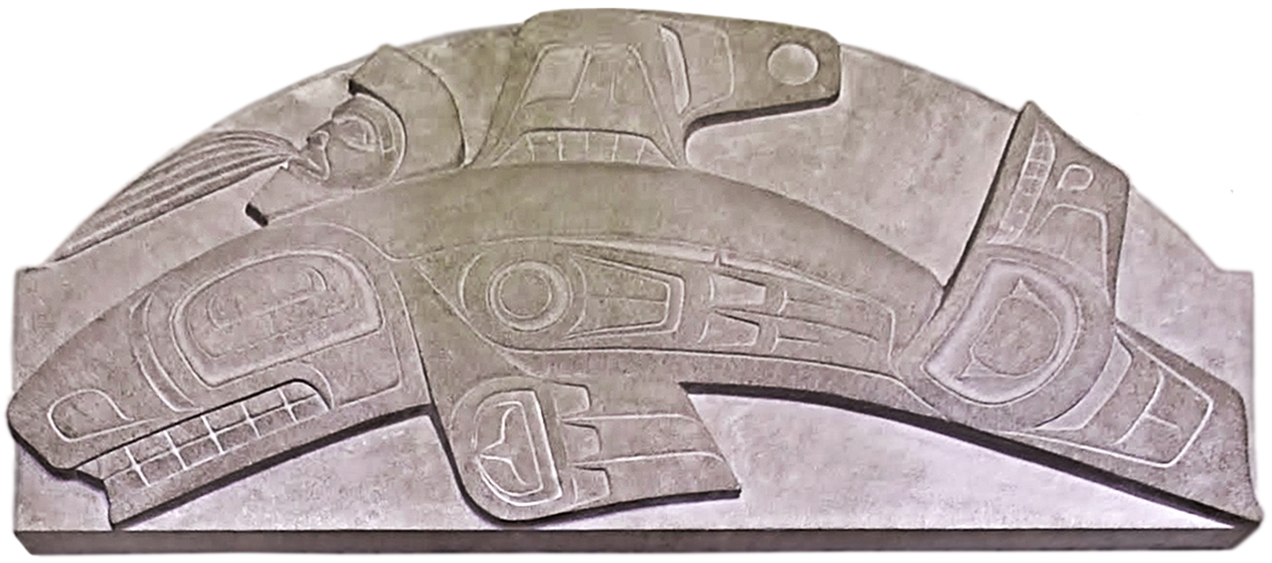
Killer whale
Killer Whale crowns the doorway of the Commonwealth Room, one of Centre Block’s most impressive meeting spaces. Carved from Indiana limestone, it depicts the main family crest of its creator, Walter Harris (1931-2009), chief of the Fireweed clan of northern British Columbia’s Gitxsan Nation.
“Images like this are a kind of heraldry,” said Karen Duffek, Curator of Contemporary Visual Arts and the Pacific Northwest at the University of British Columbia’s Museum of Anthropology. “A crest belongs to a clan and is passed from generation to generation.”
“Your history, your family’s history and rights, your responsibility to the natural and supernatural worlds — all these things are encompassed in the imagery of the family crest.”
West Coast First Nations regard the orca as guardian of the waters. They also see orca pods, with their complex social structures and sophisticated hunting methods, as undersea incarnations of human societies. Some First Nations consider whales to be humans in another form — drowned relatives or deceased chiefs resurrected in a watery parallel world.
“There’s a veil between our worlds,” Ms. Duffek explained. “Supernatural beings like the orca can transform themselves and move between the natural and spirit worlds.”
In the context of Parliament Hill, the orca can be seen as a kind of guardian spirit said Ms. Mizgala, the House of Commons curator.
“The orca embodies the soul of a chief — what better way to remind people of where they come from and the values they represent? You can imagine the soul of the chief keeping watch in this important place.”
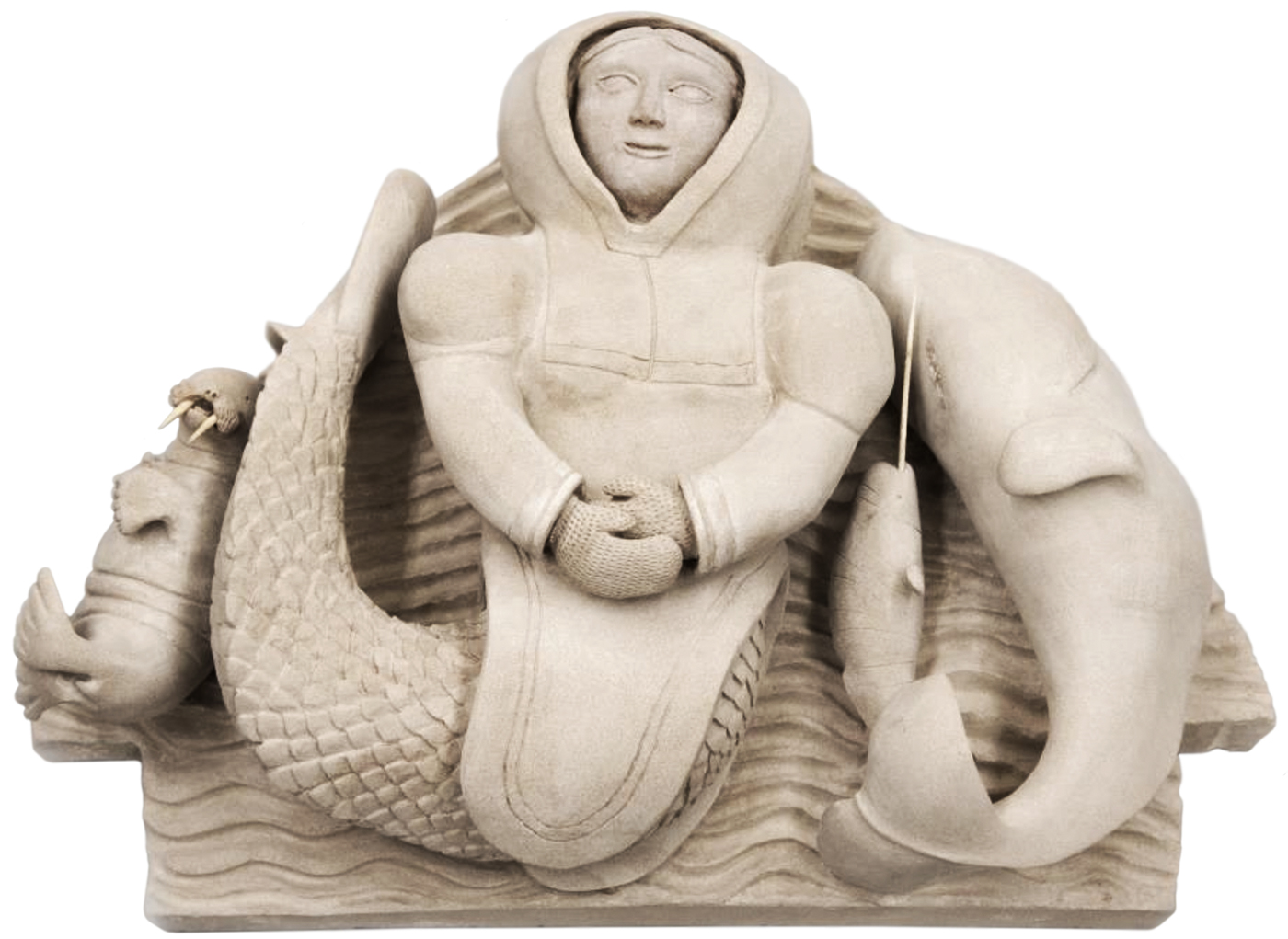
Sedna
Sedna is the Inuit goddess of the ocean and of marine animals. She inhabits the impenetrable depths of the Arctic Ocean where she rules Adlivun, the Inuit underworld.
The story of how an ordinary Inuit girl transformed into a sea goddess is portrayed by Nunavut artist Bart Hanna Kappianaq in this limestone sculpture that crowns a doorway in Parliament Hill’s West Block.
In one tradition, Sedna was travelling with her family in a kayak when a storm arose. Her father blamed her for bringing on the gale and threw her from the boat. Sedna desperately clung to the hull as he hacked her fingers off. As she sank, her severed digits transformed into walruses, seals and whales, creatures Mr. Hanna Kappianaq depicts as the goddess’s attendants.
Mr. Hanna Kappianaq attended a residential school in Chesterfield Inlet, in what is now Nunavut, in the 1950s. At 15, he was sent for tuberculosis treatment in Toronto, where he met and was inspired by other Inuit carvers.
Sedna was unveiled in April 2019, the 20th anniversary of the creation of Nunavut as a territory. The piece will remain in West Block until the restoration of Centre Block is complete, when it will move to Centre Block’s House of Commons foyer.
Read more in our series about Parliament Hill’s supernatural creatures:
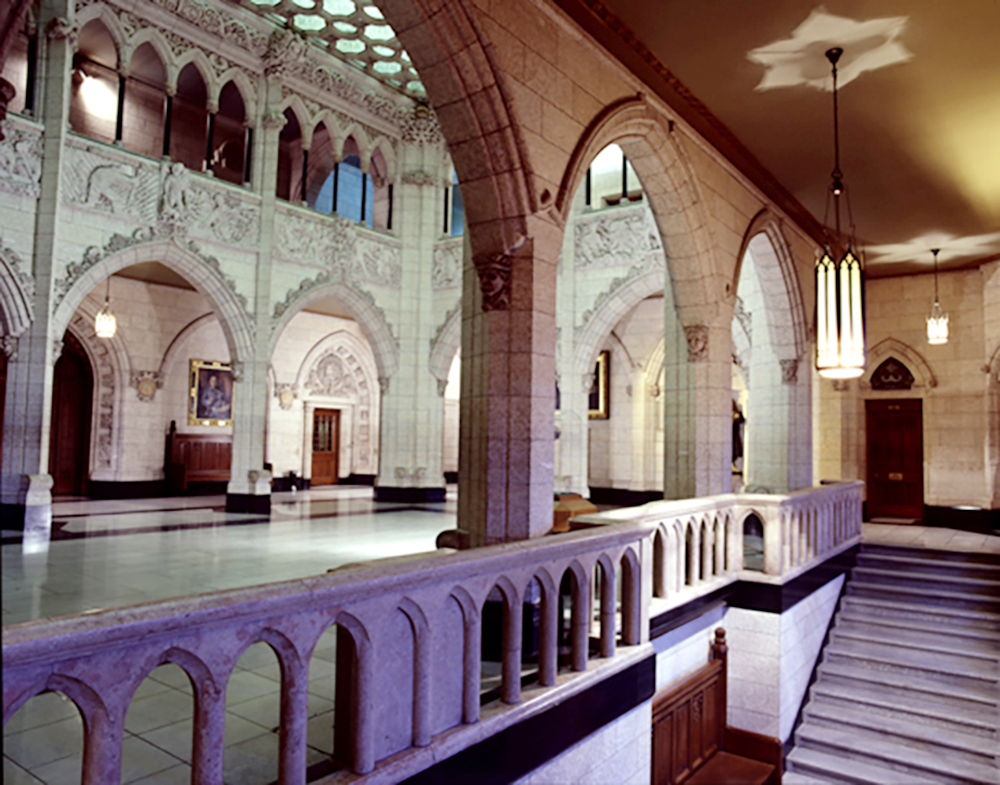 The House of Commons foyer includes several works by Indigenous artists commissioned as part of the Parliament’s Indigenous sculpture program, which was launched in 1978. (Photo credit: House of Commons)
The House of Commons foyer includes several works by Indigenous artists commissioned as part of the Parliament’s Indigenous sculpture program, which was launched in 1978. (Photo credit: House of Commons)
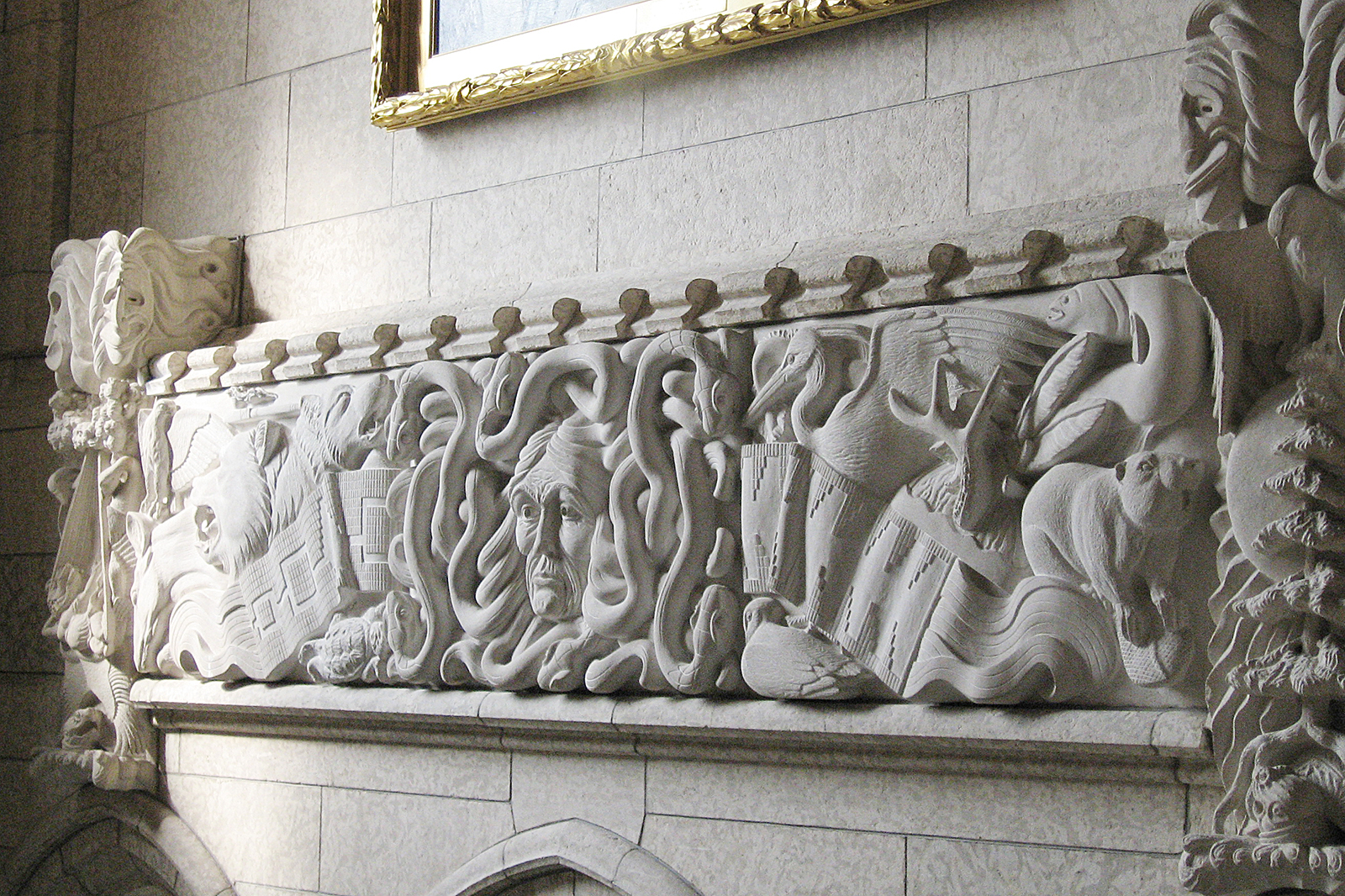 Joe Jacobs’ 1986 work The Creation, in Centre Block’s House of Commons foyer, features the snake-headed Haudenosaunee warlord Tadodaho. (Photo credit: House of Commons)
Joe Jacobs’ 1986 work The Creation, in Centre Block’s House of Commons foyer, features the snake-headed Haudenosaunee warlord Tadodaho. (Photo credit: House of Commons)
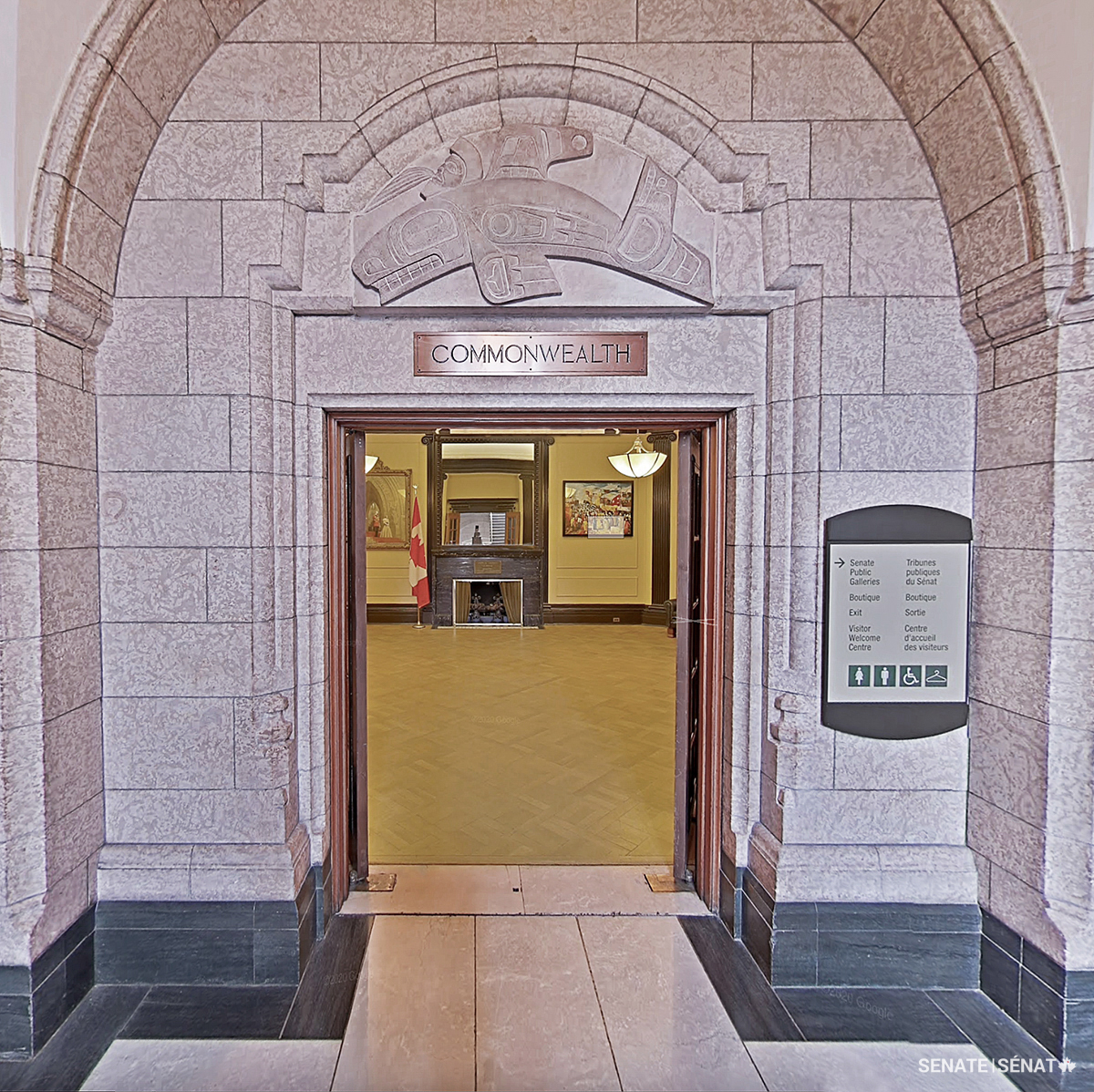
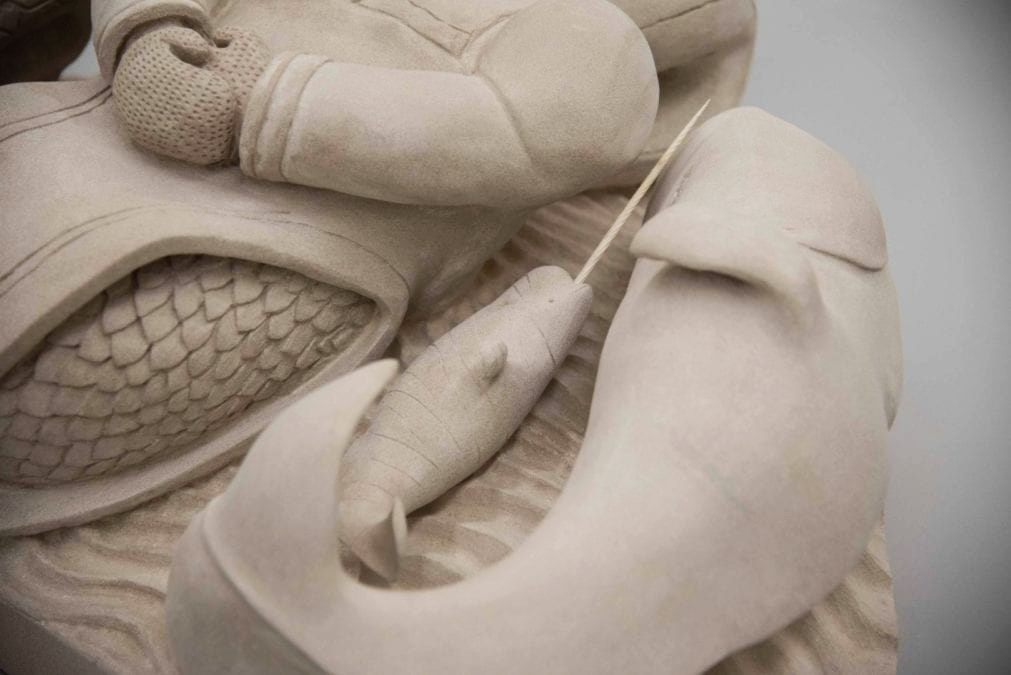 A closeup of Bart Hanna Kappianaq’s 2019 sculpture Sedna shows the sea goddess’s whale and narwhal attendants. (Photo credit: House of Commons)
A closeup of Bart Hanna Kappianaq’s 2019 sculpture Sedna shows the sea goddess’s whale and narwhal attendants. (Photo credit: House of Commons)
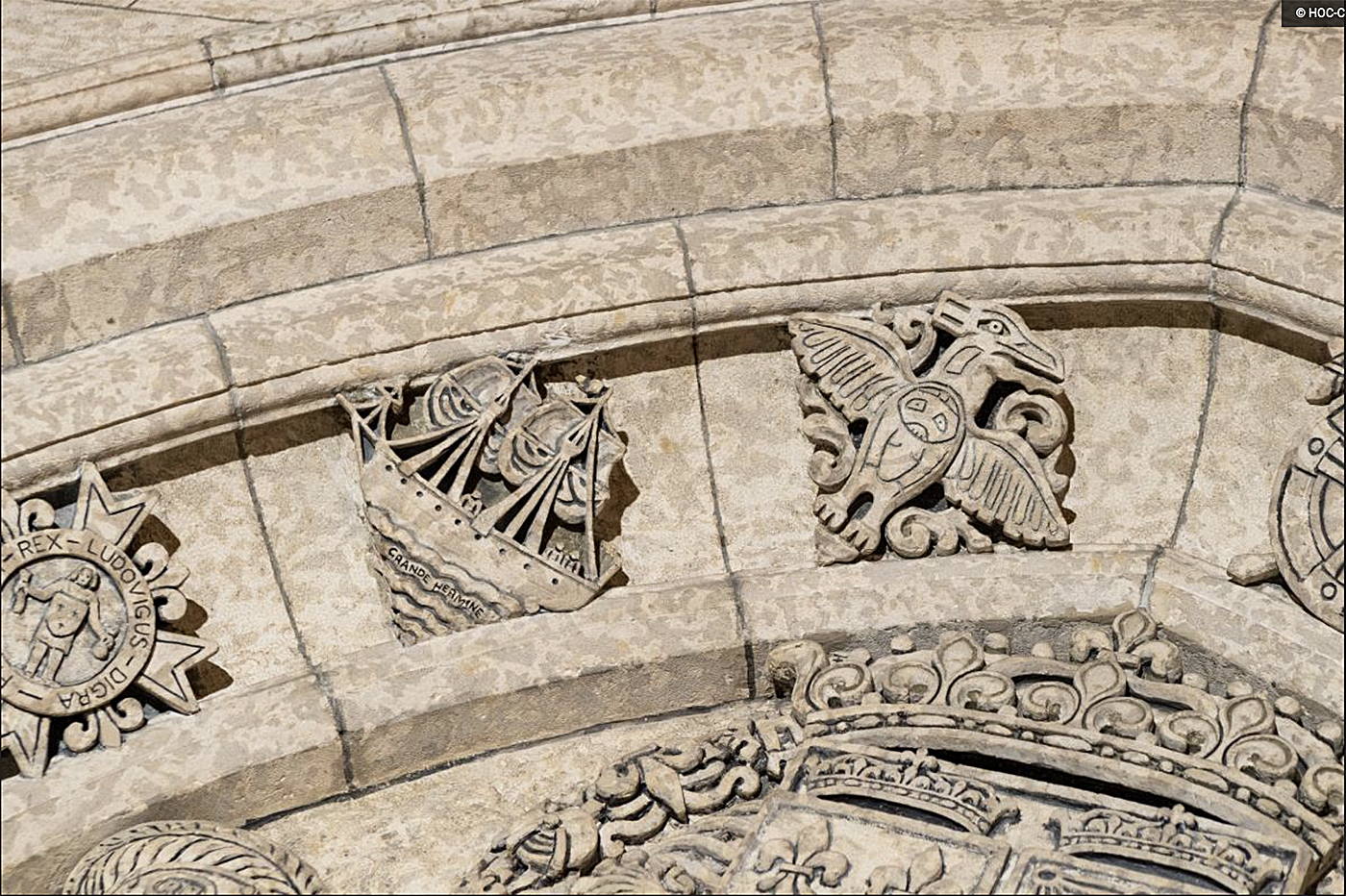 The handful of Indigenous symbols in Centre Block carved before 1978, including this thunderbird in the House of Commons foyer, were created by non-Indigenous sculptors. (Photo credit: House of Commons)
The handful of Indigenous symbols in Centre Block carved before 1978, including this thunderbird in the House of Commons foyer, were created by non-Indigenous sculptors. (Photo credit: House of Commons)


